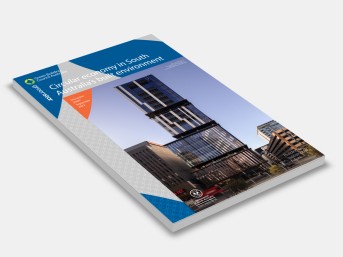Circular economy in South Australia’s built environment
South Australian Government
The purpose of this report is to summarise the circular economy opportunities for South Australia, based on a national and international review of current policies, approaches and case studies. The South Australian context has then been considered to demonstrate outcomes that are already being achieved and that can be used as a nucleus to drive continued innovation.
The key existing circular economy outcomes identified include:
• South Australia’s past and current waste and resource management strategies and programs are driving leading outcomes in resource management by providing high quality materials for reuse, remanufacturing, and recycling.
• South Australia is uniquely placed to take advantage of circular economy opportunities as it is already well progressed in developing and implementing circular economy driven materials and products. This is an opportunity to continue to demonstrate national leadership in resource management and circular economy.
• World leading renewable energy generation in South Australia is driving reduced emissions which is supporting circular economy outcomes by increasing competitiveness, reducing wholesale electricity costs, and supporting low emission manufacturing and industrial processes.
• South Australia's continued support for renewable industries including green hydrogen, solar, wind power and electrification are considered vital to continue supporting manufacturing, remanufacturing and the circular economy.
• There are multiple examples of circular economy principles being applied in the built environment which is driving emission reduction outcomes. However, quantifying these outcomes is challenging and some stakeholders are unsure on the impact their project is having.
Contents:
Executive Summary
Introduction
Circular Economy Context
Built Environment Opportunities
Barriers, Opportunities And Risks
Summary
Appendix A: Case Studies
Appendix B: Example Products And Materials
Glossary
